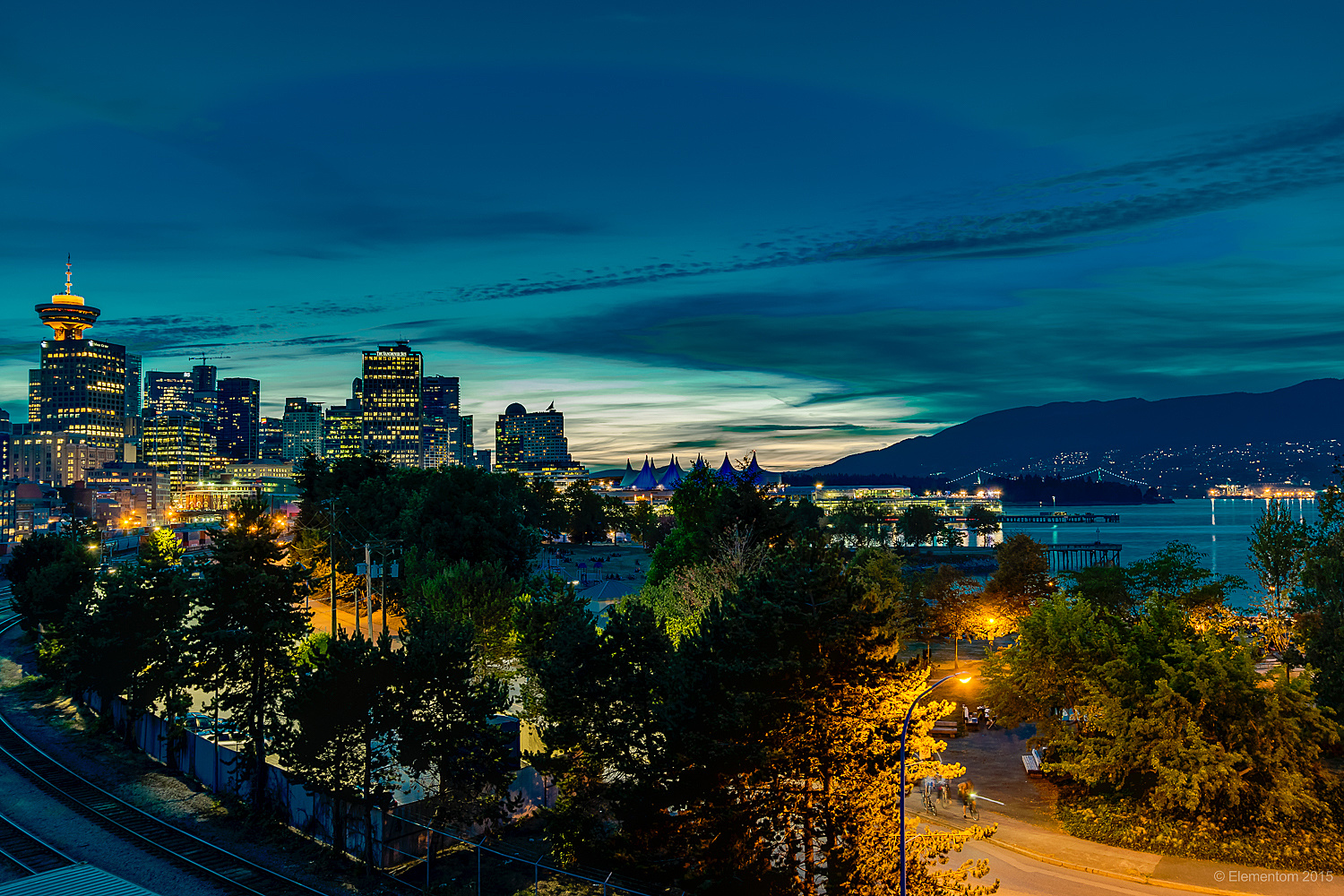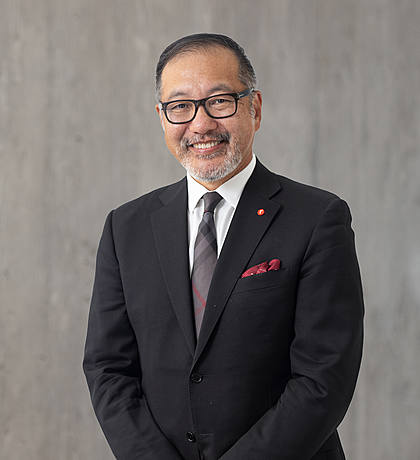Is the city's spiffy green global identity going to make us or break us?
In 2015, a report to determine the monetary value of the Vancouver’s ‘green’ brand tallied the city at over $31 billion, outperforming San Francisco, Singapore, Sydney, Shanghai and Hong Kong on perceptions of sustainability.
Photograph by: crin - Fotolia, crin - Fotolia
On the city of Vancouver website you can click on a big green arrow and be swept up in a feel-good animation about Vancouver, our little utopia by the sea, and learn about just how valuable the city’s brand is.
For positioning, cities with famous reputations — Paris! Rome! L.A.! — are introduced.
Then, we meet “brand” Vancouver. “A great place to live, work, play, connect and innovate,” exults the voice-over. An animated skateboarder whizzes past cartoon figures engaged in happy leisure activities: meditating, Frisbee-playing, dog-leaping, sailing and kayaking. If a brand is about identity, ours is green.
Green is to Vancouver what “love” is to Paris, “history” is to Rome and “movies” are to L.A.
And that’s not just tree-green, veggie-green, or 420 green. It’s dollar green.
In 2015, the city of Vancouver and the Vancouver Economic Commission jointly engaged Brand Finance, a Toronto-based firm, to determine the monetary value of the Vancouver “green” brand.
The report tallies Vancouver’s “brand value” at over $31 billion. Vancouver has more “brand equity” and “outperforms” San Francisco, Singapore, Sydney, Shanghai and Hong Kong on perceptions of sustainability. (The study uses those five cities as comparables based on shared criteria: their location on natural harbours, their air travel hubs, education systems, business centres and shipping industries.)
This brand equity valuation is part of evidence submitted by the city to the National Energy Board hearings on the Trans Mountain pipeline expansion project, arguing against increased oil tanker traffic in the Burrard Inlet.
What’s at risk if our city is damaged by an oil spill? Not just our flora and fauna, our sandy beaches and our health, but that other, less tangible asset: our brand.
Branding cities is about defining intangibles: a feeling about a place, how the place is positioned in the imagination, and the meaning it has. Brand valuation is about putting a metric on a feeling.
So what does it mean to have a strong “place brand”?
According to the city’s video, our brand is all about “our ability to attract, people, companies and investment.”
If what we gain by having a strongly branded city is investment, what do we stand to lose by treating Vancouver as a corporate brand, especially as that brand becomes more and more attractive internationally?
While branding cities is a relatively new phenomenon, according to Miriam Greenberg, a sociologist at the University of Santa Cruz and author of Branding New York: How a City in Crisis was Sold to the World, the trend of branding cities as “green” is not unique to Vancouver.
Cities as diverse as New Orleans, San Francisco, Copenhagen, Curitiba, Medellin and Bogota are all vying for the sustainability crown, but the flow of dollars — all that “green” investment capital — that comes with it has a downside.
“When the term sustainability or greening is used, how can anyone argue against it? Green is good. But if you don’t plan for the increased land values and property values that are going to come with this kind of intensive branding and commodification then, while you are attracting capital to the city, more affluent residents, tourism, all that good stuff, it’s also going to drive up the cost of living in a big way,” said Greenberg.
The green branding of Vancouver isn’t just about environmental sustainability, it’s a marketing tool that raises important questions about how we will live in the coming years: What is our city for? Who is it for?
If strongly branded cities like San Francisco and New York have boomed economically as a result of the success of their brands, attracting lucrative business investment and tourism, arguably it has also been at the expense of what made those cities attractive in the first place.
Patrick Condon, chair of the urban design program at University of B.C., believes that place branding is “sometimes good, and sometimes bad.”
San Francisco, once a bohemian city home to artists, hippies and ideas, is now, according to some observers, in danger of losing its soul as capital pours in from the booming tech industries housed in its neighbouring suburbs. But at least San Francisco benefits from investors that have emerged from its own industries, said Condon.
“San Francisco has its own internal economy, the local high-tech industry that is of value to the rest of the world.”
That means at least some of San Francisco’s residents are making salaries that can support the cost of its rising “brand value” and real estate.
Vancouver may be a victim of its own success if its image continues to be so attractive to investors internationally that it disadvantages those who simply want to live and work here, said Condon.
“The Vancouver brand is pushing us into a category of global cities that have this atmosphere of success around them, like Sydney or Singapore,” said Condon. “We are being sold as a utopia.”
Perhaps the most lucrative economic opportunity our brand attracts is real estate investment, but that doesn’t benefit those who live here.
This, cautions Condon, has a direct impact not just on affordability, but on democracy.
“The more international capital flows here, the less control local cities have.”
Tania Parisella, marketing and research director at the VEC, said Vancouver was recently declared the “fastest growing economy in Canada,” by the Canadian Conference Board, and is predicted to hold that lead for five years to come. She believes that our “green” brand is attractive enough that head offices, with their high salaries are headed here.
“Sony Imageworks basically closed down their L.A. office and opened their headquarters here. That indicates it’s not just because we have Stanley Park and the lifestyle here. There’s a bunch of other companies that have set up shop here, Amazon, Microsoft, Tableau in the tech sector. That to us demonstrates that there’s been a bit of a shift in terms of talent attraction and investment.”
Key to defining a city’s brand identity is authenticity.
A brand that reflects the intrinsic values and history of a place will be more successful than one that merely tries to mask problems.
Vancouver’s brand has grown organically, says Edgar Baum, author of the Brand Finance report. Positive international perceptions of Vancouver’s brand had a kickstart, said Baum, in part because of good timing.
Social media was just starting to explode in 2010 and the world watched the city livestreamed during the Winter Olympics. For two weeks, Vancouver was showcased as a walkable, temperate, livable city in a pristine natural setting.
“There are a lot of benefits that cities get (from branding). Various organizations and corporations that leverage a moderately strong or strong city brand can benefit,” said Baum.
But what about that livability element? If Vancouver is so successful at attracting attention and investment that it prices average working families out of the city, how does that affect the city’s brand?
“If the city is for the rich and for luxury, and the rest of the population has the role of living outside the city and commuting in to service the rich, then we are looking at a world that is very different than the one we grew up in,” said Condon.
Acting city manager Sadhu Johnston took a moment to reflect on the challenges Vancouver’s brand is facing.
“What we wanted to do was not just to put a number on the brand, but to understand risks to the brand.”
The research showed an oil spill in the Burrard Inlet could impact the city’s brand to the tune of up to $3 billion and bolstered the city’s argument that an oil spill could be a real threat to our economy.
Our green image creates positive associations, said Johnston. “People want to be a part of it, and come and experience it. More than protecting the brand we are looking at ways we can build off that brand.”
But oil spills aren’t the only potential threat to the brand, and sustainability is about much more than meeting environmental quotas. Sustainability has to address social sustainability, not just environmental “greening,” said sociologist Greenberg.
“Sustainability and affordability can’t be separate conversations.”
Even bringing alternative stakeholders like urban gardeners and radical cycling groups to the table in designing the sustainable city doesn’t mean those people will be able to afford to stay once the brand becomes successful.
“You can change amenities to make biking or city gardening more feasible,” said Greenberg, “but that doesn’t mean you couldn’t completely replace the existing population and have a new, more affluent group move in who would be using those bike paths and those beautiful gardens.”
Research, said Greenberg, is starting to show the shadow side of the successfully branded “sustainable” city.
“Typically, market-oriented, competition-oriented greening has a perverse, paradoxical effect which involves driving low income people out of the centre of the city, to the suburbs and outlying areas.”
When you move the main transit users to the suburbs, and attract higher income people into the downtown who use transit less because they prefer cars, the carbon footprint of a region actually increases.
In addition, the housing and transportation cost burden in Metro Vancouver (owners with mortgages paying an average of 40 per cent of their pre-tax income for housing and transportation and renters 49 per cent), casts a lot of shade on our bright, shiny “green” brand.
“That kind of data should be included in any discussions about sustainability. Having a (high housing) burden throws off all the numbers because it leads to so many contradictions socially and ecologically,” said Greenberg.
“We’re a real city with real challenges,” said Johnston. “We’re not a Disney World. We’re a community, and we have real challenges to overcome. Major challenges with drug addictions and poverty, and I think the housing affordability is beyond a branding issue, but one of the biggest challenges is we have to maintain the very Vancouverness and what we are, which is a very eclectic and diverse community.”
Whether Vancouver can sustain its eclectic character, and its economic and social diversity as its “brand value” skyrockets remains to be seen.



